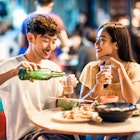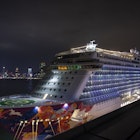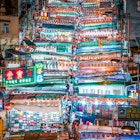Hong Kong is not a cheap place to visit. But with good planning, a bit of creativity and an eye for beauty, you can spend an enjoyable day in the city for very little money.
Besides parks, beaches, temples, and the usual suspects, free art and music abound in this sophisticated, fast-paced metropolis. And sometimes a well-curated walk in a storied neighborhood can be as richly rewarding as a trip to any museum.
So if your wallet is feeling a little light, make the most of our choice of the best free things to do in Hong Kong.
1. Pre-register to visit the Hong Kong Museum of Art for free on Wednesdays
You may well be among the first foreign visitors to step inside the Hong Kong Museum of Art after its four-year, $120-million makeover. HKMOA reopened in late 2019 with a sleek new look and 12 galleries but had to close again because of COVID-19. Pre-register online for a free visit on a Wednesday and see HKMOA’s highlights: modern and contemporary Hong Kong art, China trade art, and of course, the views of Victoria Harbour through spotless floor-to-ceiling windows.
Also by the harbor but over in West Kowloon, the new Hong Kong Palace Museum (HKPM) (also free on Wednesdays with pre-registration online) showcases 1000 artifacts on loan from Beijing’s Palace Museum. The relics range from bronzeware and painting to objets d’art belonging to the emperors.
At the time of writing, several public museums have waived their admission fees. Check the websites for the latest information before you go.
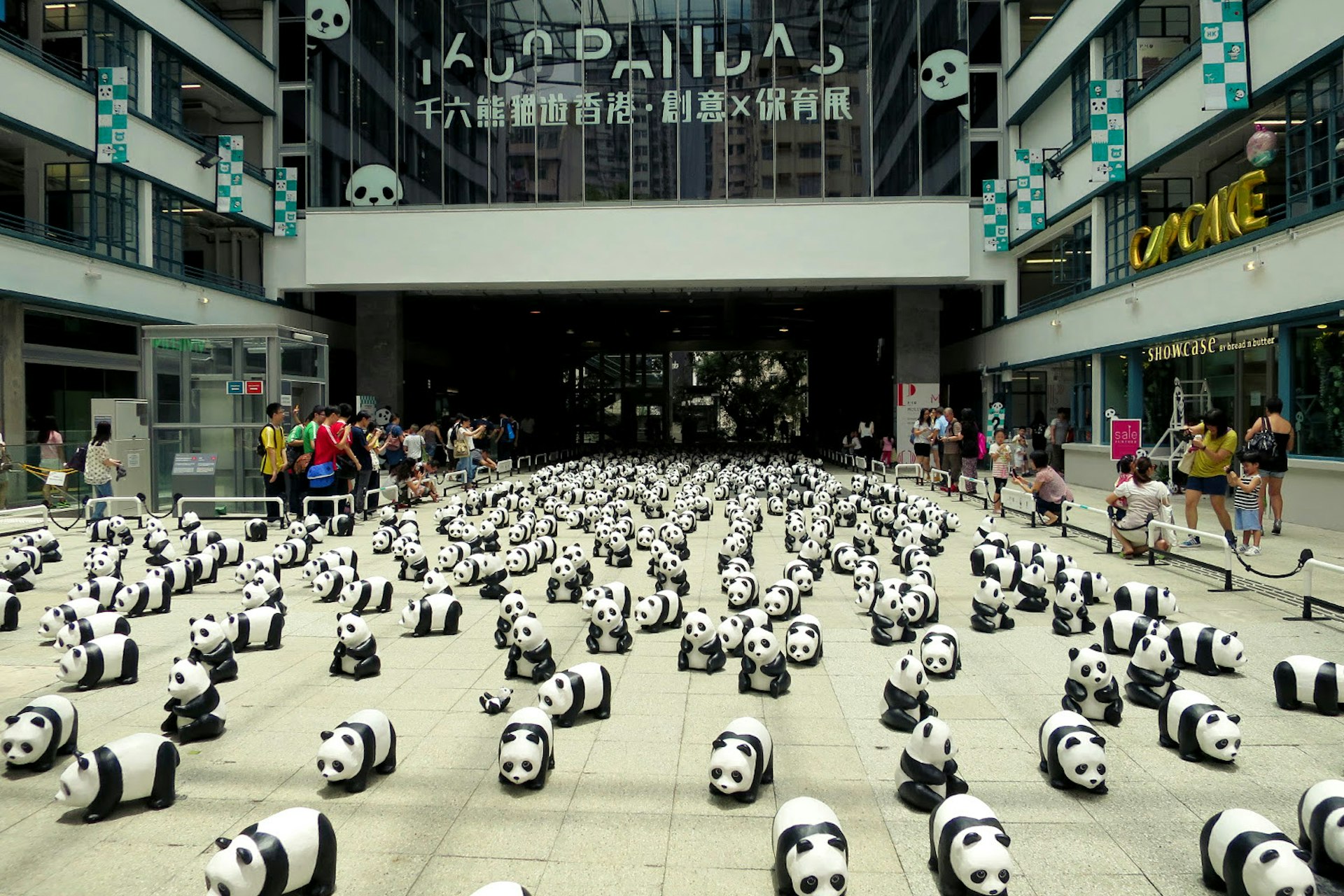
2. Tour Tai Kwun's vast heritage and arts complex
Tai Kwun, Hong Kong’s behemoth heritage and arts complex is a delight to visit, even if you bypass the charging gallery and upscale restaurants. The neoclassical police station-magistracy-prison-in-one complex (c.1840s) has been meticulously restored with extensions added by Swiss architects Herzog and de Meuron. You can roam freely in most of the 18 blocks to learn about the site’s history and enter the prison cells. Leave time for shooting a panoramic video in the majestic square that was the parade ground.
From Tai Kwun, a five-minute saunter takes you to PMQ, where artist studios, artisans’ workshops and souvenir boutiques have taken over two blocks of former police quarters (c.1950s). Wander through the airy corridors from the top floor down, and have a peek at the exhibits in the square below.
If you use the Central-Mid-Levels Escalator on your way to or from Tai Kwun, you’ll pass by Central Market, a multi-story retail complex reimagined from a 1930s fresh food market in the Streamline Moderne and Bauhaus style. Check to see if gigs and exhibitions are on, apart from displays about the site’s history.
3. Wander Tai Ping Shan Street
The charming Tai Ping Shan St neighborhood deserves a visit either on a detour from Tai Kwun or PMQ, or on its own. From Hollywood Road, turn into Ladder St when you see Man Mo Temple (or have a look inside before turning – it’s photogenic.) Then make a right into Square St where a funeral shop sells shiny wood coffins. At the end of Square St, turn right again – you’ve reached Tai Ping Shan St where comb-over uncles rub elbows with eco-yogis in a tea restaurant or indie bookstore. It may be hard to imagine this leisurely ‘hood was the ground zero for a bubonic plague in 1894. After the plague ended, the government built Blake Garden, a pretty park just above Tai Ping Shan St. Kui In Fong connects you to the park and its two regal Chinese banyans with their curtains of aerial roots.

4. Soak up the vibe of Sham Shui Po neighborhood
Sham Shui Po (SSP), a former manufacturing hub, has developed into one of the most quintessentially Hong Kong districts in recent years. While it remains a working-class neighborhood that many visit in order to buy knock-off drones and bargain garments, community-minded artists, cafe owners and third-generation entrepreneurs have infused it with a more vibrant, cosmopolitan vibe.
Exit C1 of Sham Shui Po MTR station lands you smack in the middle of the sprawling electronics flea market on Apliu St. As you venture south, techies and hobbyists give way to designers and stylists on Ki Lung St aka Button St due to its concentration of shops selling buttons, Yu Chau St aka Bead St, Nam Cheong St aka Ribbon St, Tai Nan St aka Leather St, and Yen Chow St Hawkers’ Bazaar with its fabric vendors. North of the MTR, Toy St (Fuk Wing St) has two dozen shops overflowing with old-fashioned playthings that are as far from a regular toy shop as it gets.
Keep an eye out for listed monuments and quirky buildings sandwiched between nondescript walk-ups, such as Lung Hing Tong (Ki Lung St) with its pagoda roof and frescoes, the neoclassical SSP Police Station (Yen Chow St), 170 Yee Kuk Street built in the 1920s, and Nam Cheong Pawn Shop (Nam Cheong St) with its bat-and-coin sign. If you want to meet people without going to a hipster cafe or a Michelin-recommended noodle stall, check out White Noise Records, Parallel Space or the hostel Wontonmeen. They host gigs, shows and meet-ups, and are simply chill places to be. Lastly, before hitting the metro, enjoy free air-conditioning in an Instagrammably surreal setting at Dragon Center, a shopping mall with an indoor roller coaster.

5. Get outdoors in the hills or on the coast
Almost 70% of Hong Kong is officially green – urban hills, country parks and surf-beaten coastlines (some cradling beaches), all free and within an hour from the city center. You can also hike up to Victoria Peak and Po Lin Monastery to enjoy trillion-dollar views (plus Big Buddha) for nothing. For those with less time, there are urban oases like Hong Kong Park with its walk-through aviary, Botanical Gardens from the Victorian era, Kowloon Park, a former barracks, Middle Road Children’s Playground above a bus terminus, and Cyberport Waterfront Park with its expensive pooches and their owners.
Sai Kung is home to gorgeous hiking trails, with a couple running through the wonderful Hong Kong Unesco Global Geopark. Combine a half-day hike with a trip to Sai Kung Town with its temples, dried seafood shops, and fishing boats lined up by the pier selling seafood, and you’ll have a fabulous day.
6. See street art and galleries in former factories in Wong Chuk Hang
Some of the top Hong Kong and overseas big-name galleries have moved into the former industrial warehouses of Wong Chuk Hang, close to Hong Kong’s famous Aberdeen Typhoon Shelter. You’ll notice street art and industrial-chic cafes the moment you exit Wong Chuk Hang MTR station. Galleries of interest include Blindspot, Lucie Chang Fine Arts, Sin Sin Fine Art, de Sarthe, Axel Vervoordt, Rossi & Rossi, Empty Gallery, and Gallery Exit – all as free as the salty breeze.
When you finish, walk 10-to-20 minutes to Aberdeen Promenade, a pleasant waterfront strip with piers, trees and a fish market (active in the morning), and watch sampans and leisure yachts go by. On the way there, you’ll pass downtown Aberdeen, the home of Hong Kong’s largest fishing community.

7. Be drawn into the lively atmosphere at the city's markets
Fresh produce markets are very much a part of local life and they’re strewn all over the city. But if you find them overpowering or simply want variety, here are great alternatives that are just as local (and busy).
At the Flower Market, it’s florals and gardening tools galore. While you’re there, take a look at the gorgeously restored art deco buildings at 190–212 Prince Edward Rd. Morning is the best time to go. Come sundown and Temple Street Night Market materializes seemingly out of nothing to beckon locals and tourists with bespectacled fortune-tellers, trinkets from sex toys to Nepalese kukri, and street artists belting out Cantonese operatic arias.
8. Hear local musicians for free at Lau Bak Livehouse in West Kowloon
The new 40-hectare harborside West Kowloon Cultural District is home to two world-class museums (M+ Museum and Hong Kong Palace Museum), a Xiqu Center devoted to Chinese operatic arts, picnickable lawns, and Lau Bak Livehouse. In addition to free Wednesdays at the Palace Museum already mentioned, the chill Lau Bak Livehouse hosts M+ curated gigs by local musicians every Friday and Saturday from 9.30pm. Enjoy the vibe and the jazz (or city folk, electronica, rock, you name it) outside the French doors of the bar. M+ also throws music festivals featuring free events.

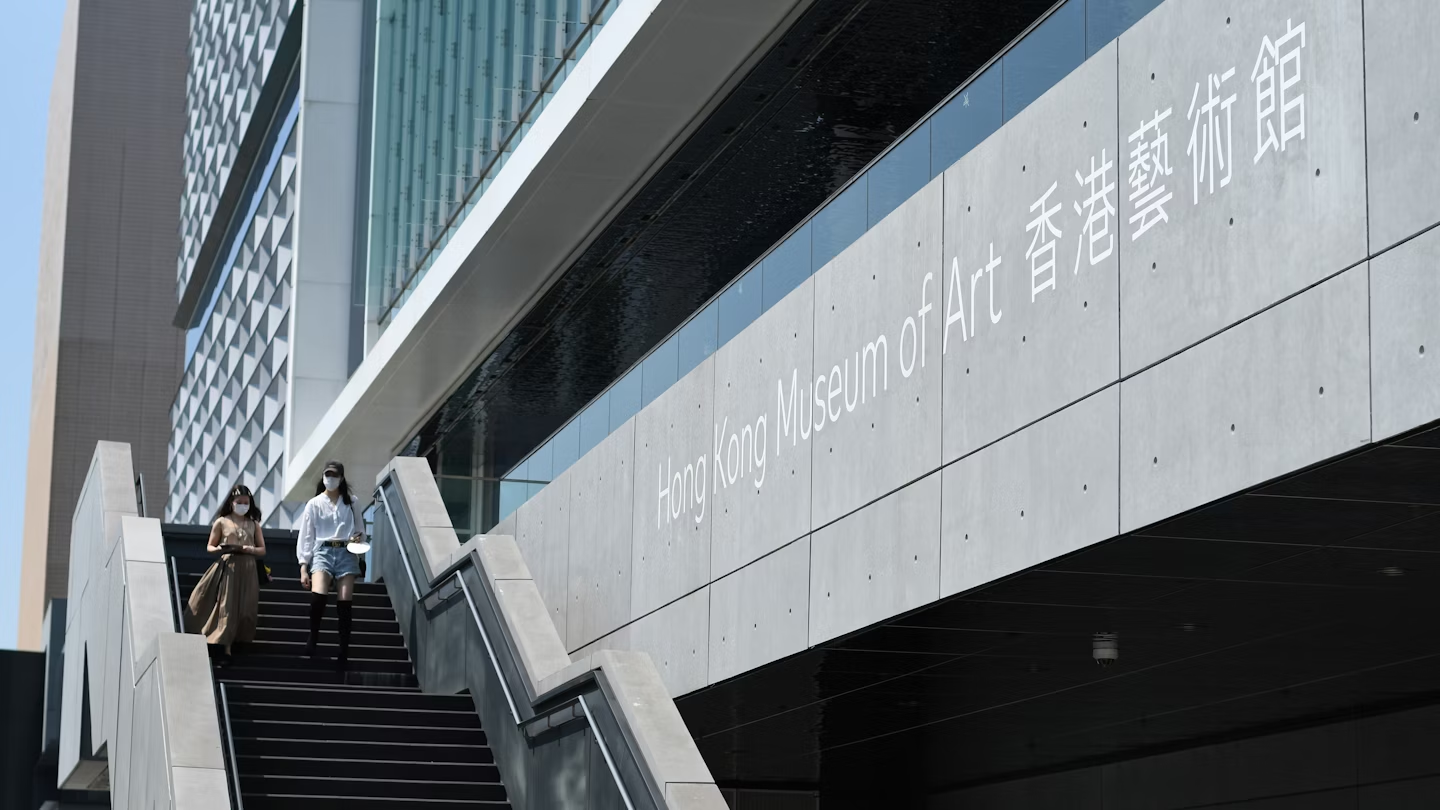
.jpg?auto=format&w=730&h=630&fit=crop&q=75)
.jpg?auto=format&w=780&h=425&fit=crop&q=75)
